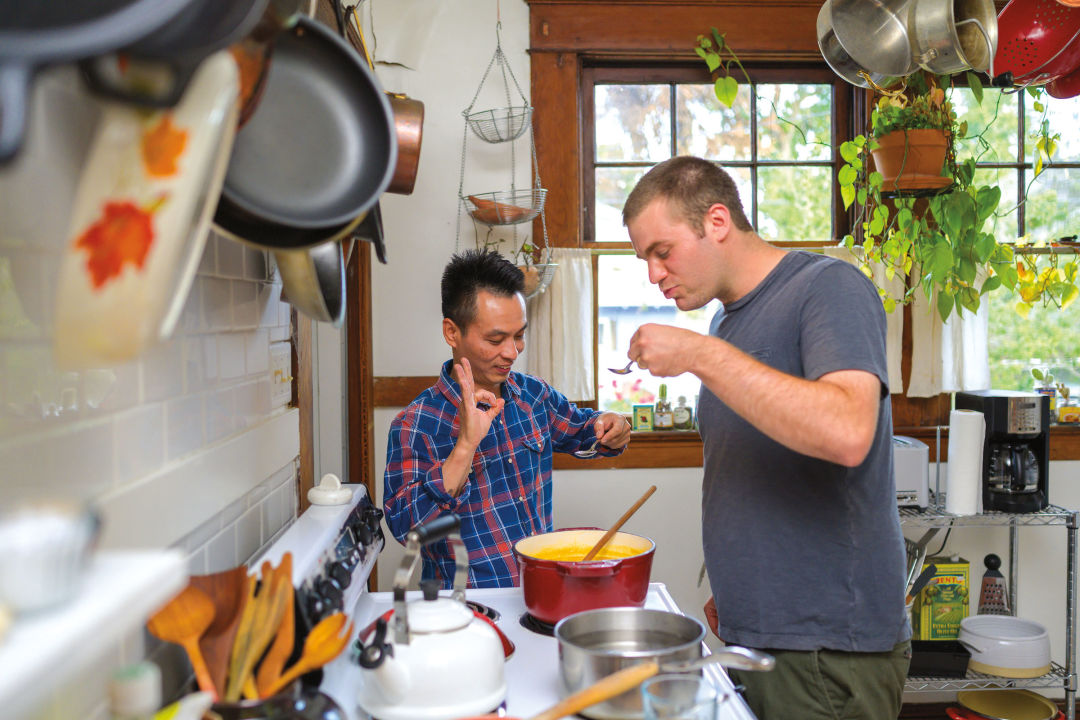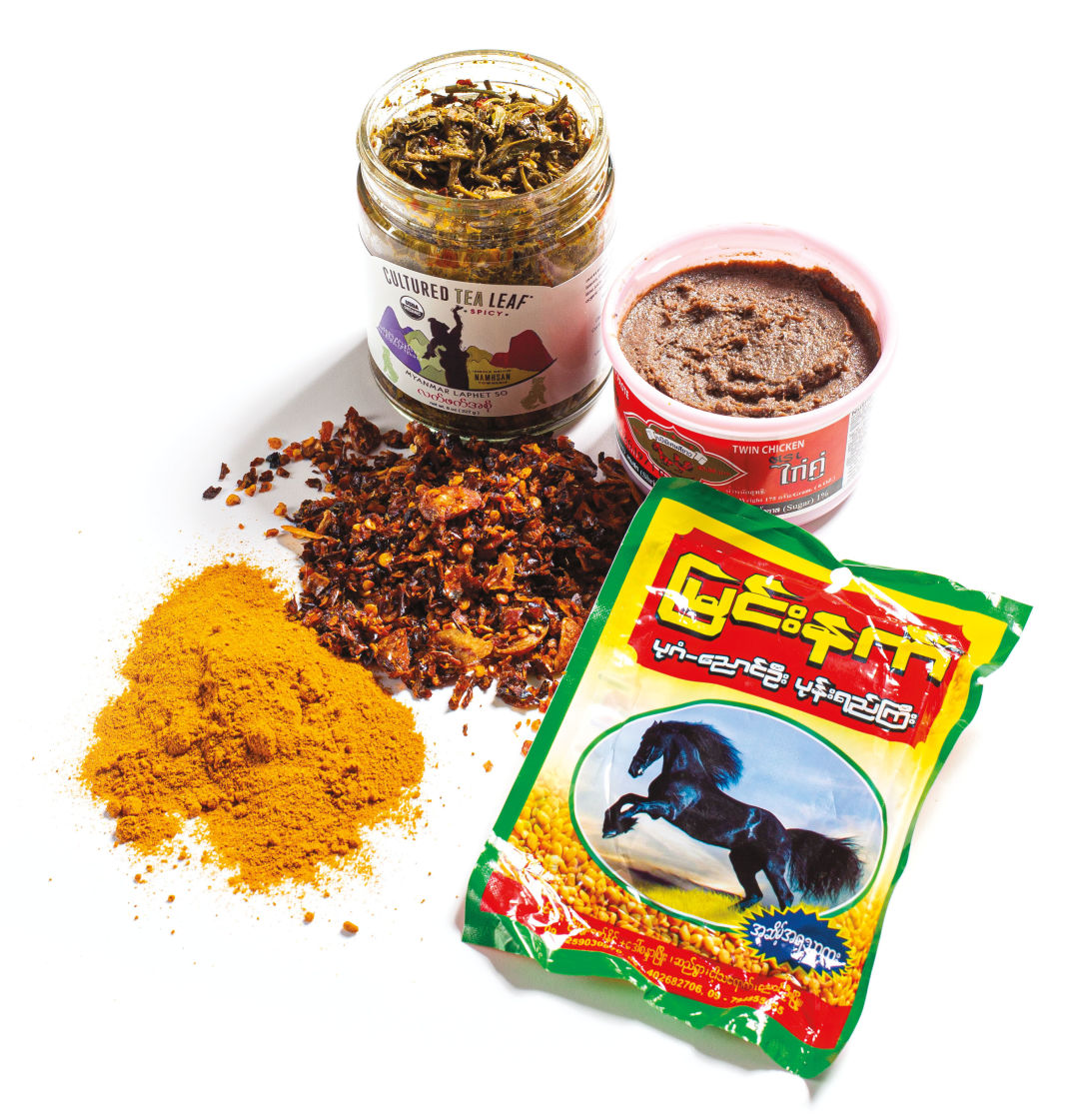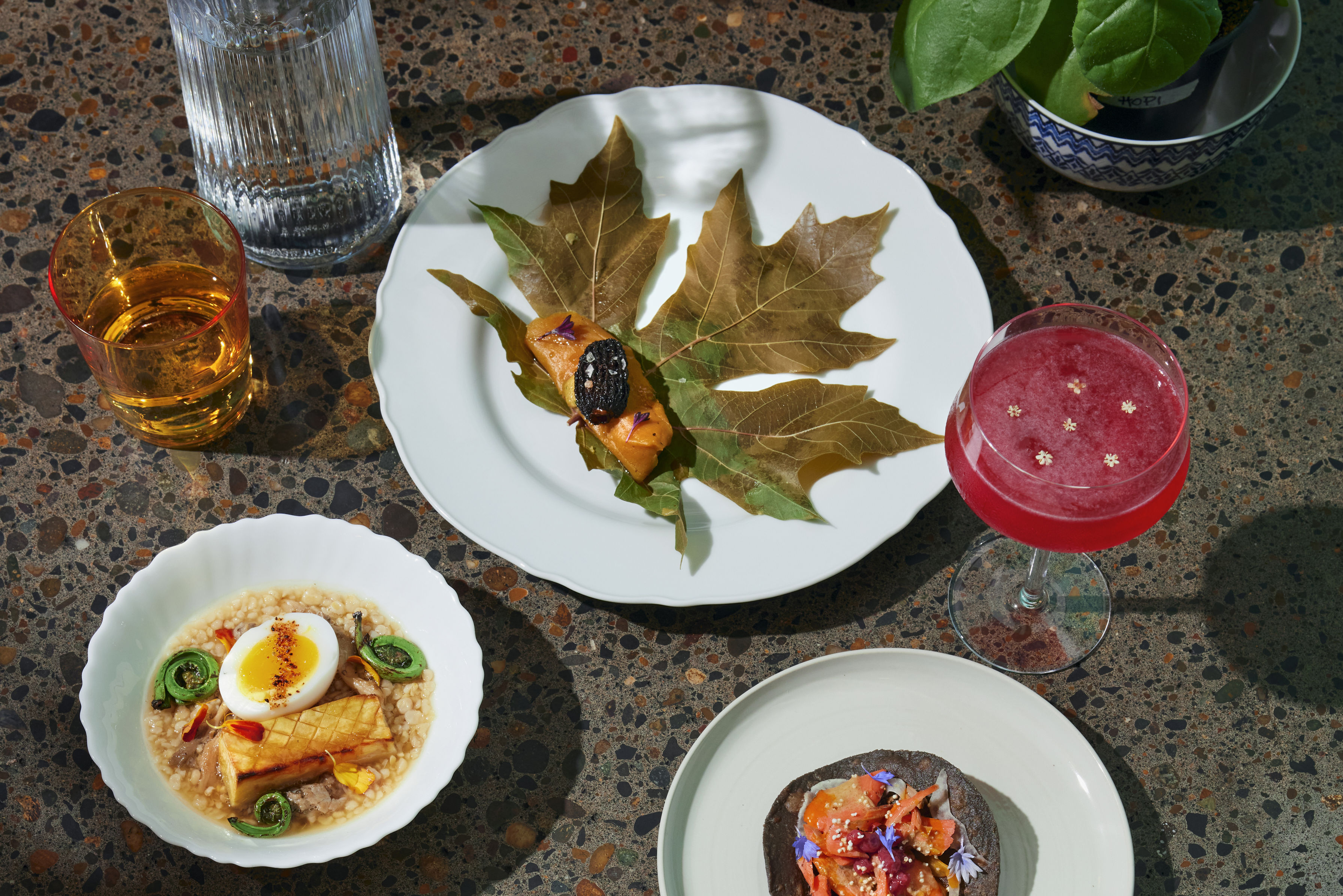Two Portland Cooks Give Burmese Food a Fresh Voice

Alex Saw (left) and Nick Sherbo tasting their ohn-no-kauk-swe, or coconut noodles
Image: Courtesy Shawn Linehan
It’s been a long time since Alex Saw has been back home to Rangoon, now known as Yangon. In 2002, when he was 15 years old, a friend told him they had to leave. Now. Saw had been covering political protests as part of a student activist group, and the army was coming to arrest them. After a quick goodbye to his family, he and several of his fellow students set out for the closest country: Thailand. “We walked through the night,” Saw recalls. “It was like three days walking in the street. It was rough.”
Saw bounced from Thailand to Malaysia, where he worked his way up from dishwasher to sous-chef in an upscale Italian kitchen that ignited his passion for cooking. In 2010, he landed in Portland with help from a UN refugee agency and began working as a line cook at fast-casual Indian favorite Bollywood Theater. Three years later, with the help of former Bollywood sous-chef and Portland native Nick Sherbo, he launched Rangoon Bistro at the King Farmers Market, slinging seasonal thokes (cold salads) and pork rib curry.
Saw and Sherbo’s project arrived just as Burma (also now called Myanmar) was having a moment in Portland, with spots like Top Burmese on NW 23rd and Burmese Delight on SE Morrison both opening shortly after. The nation’s cuisine is a melting pot: fresh veggies, pickles, chiles, and pastes with influences from India, Thailand, and China. “There are coconut milk-based curries. Biryani. Samosas. There are noodle dishes and steamed dumplings,” says Sherbo. “Maybe you’ve never been to a Burmese restaurant, but there are lots of things that are already familiar to you.”
As of 2020, Rangoon Bistro has evolved into a pop-up with monthly dinners at Langbaan and Bollywood’s private dining room, Churchgate Station. At a nine-course New Year’s Eve kickoff dinner at Langbaan, Saw and Sherbo bounced from authentic to playful: a spot-on lahpet thoke fermented tea leaf salad, a rich Shan tofu porridge topped with crispy ground pork and peanuts, and a mohinga—Burma’s national catfish stew—but with Pacific Northwest salmon. The leanings of Saw’s lost homeland were all there, but any sense of militant authenticity was gone. For Saw, there are only three rules to follow, referencing a common Burmese truism: “The best fruit is mango. The best leaf is tea leaf. The best meat is pork.”
► Rangoon Bistro Pop-Up Dinner: 7:30 p.m. Mar 14, $60 per person, churchgatestationpdx.com

Clockwise from top: lahpet, ngapi, pone yay gyi, turmeric, and balachaung
Image: Michael Novak
The Burmese Kitchen
Lahpet: Fermented tea leaves are probably the most distinctive—and addictive—condiment in Burma. The meaty, slightly sour, salty mash can be eaten alone, atop salads, or as a snack with peanuts.
Ngapi: Strong fish flavors abound in traditional dishes—along with this pungent paste, made from fermented fish and often fried in dishes with shallots and chiles, among other things. Regional variations are vast, but it’s a crucial ingredient (and condiment) for many Burmese dishes.
Pone yay gyi: This paste is made of fermented horse gram (don’t worry, vegetarians: it’s a rare type of lentil) and fried with peanut oil, garlic, shallots, and salt. The resulting mixture can be eaten plain with rice, tossed in fried rice, or served as a sauce over pork or green mango.
Turmeric: Unlike Indian cuisine, with its complex seasoning blends, Burmese recipes tend to draw from a pared-down spice cabinet. (“In a way that’s kind of like Italian,” says Sherbo. “Adding more to it isn’t necessarily going to make it better.”) Along with coriander, cumin, peppers, and cinnamon, one of the most commonly used spices is turmeric. Turmeric 101: wear gloves or have yellow fingers.
Balachaung: Made from fried dried shrimp mixed with chiles and garlic and found on every Burmese table, balachaung is a ubiquitous condiment that can go on literally anything.




